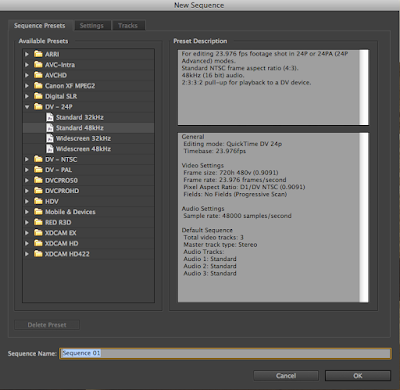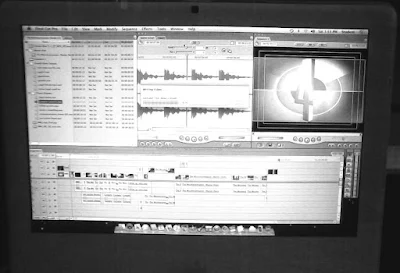A Digital Imaging Technician (D.I.T) bridges the gap between principal photography and editorial.
What does a D.I.T do?
Designing secure workflow for smooth picture and sound post.
Backup of original camera file from the cards with md5/hashxx64 checksum verification &
spot checking that includes production audio in organised manner.
Onset technical problem solving of issues that may arise, primarily during principal
photography and post-production.
Generate dailies with base grading from the raw rushes for edit with metadata with transcodes.
Create data reports and keep the key members of the unit informed.
On set color management & leveling.
You can look at it as "Chief Technical Officer" (C.T.O) for camera department.
The challenges of D.I.T in Indian scenario.
"Most of us are not yet doing live grades but we are getting there. It's the cost."
You plan for outdoor location shoot may be abroad that's when the editor or DOP mentions to hire Digital Imaging Technician to organize, structure and transcode with on set looks on clips if you are using log and flag QC issues on set. Be a second pair of eyes checking for issues that may be bottleneck during post production stage or before leaving the expensive location.
But mostly data wrangler is hired by junior production member or due to budgetary decisions. At the end majorly a data wrangler with an laptop comes to set to primarily copy and paste data with no checksum and QC to verify the copy from capture media cards to hard drive or SSD with only screenshot copied on the drive. At times, I hear one hard drive copy is made and second copy is made later. Resulting data corruption and errors and QC issues being copied onto to the second backup without even visual QC by the time the cards are formatted for reuse.
It's too late but things are changing at snail pace in India for non OTT shoots. The reason camera attendants who also double up as data wangler have another shoot next day so they kind of choose to ignore the process which causes heavy budgetary loss and the content suffers may be because now you have to use alternate take available.
Let's continue with our scenario. In the ninth moment it's now decided that the editor will be joining for the two month schedule. So finally D.I.T is hired because you need some one to add luts and transcode and not "convert!" as I hear in lay persons terms you mean "transcode" right. Hopefully the right person will be hired on the project who uses checksum for the transfer and legal tools for transcodes with right color science and calibrated monitor and configuration with applications and knowledge of post workflow pipeline.
The shoot begins and finally shift ends with key members of the team meeting for the first time on set floors and that's again things may go for toss. When production decides to make the DIT wait after long day end or after night shoot, post pack up till remaining cars are full after two hours three hours wait post pack up is called. Finally a transport cars or grip, light team car arrives and the DIT is finally taken to the far away hotel not without the production running some errands in between while data is still lying with the D.I.T to make the matters worst the hotel is in middle of no where and the DIT has to double up as security. The D.I.T has seen the cattle grazing and a single railway line who is staying outskirts with camera, sound in a hotel filled with cobwebs and bed bugs, home for next few weeks before location shift on most of the projects since it's a series to save few shillings that may have drastic consequences if luck runs out.
Why such a long story well the editor is 3-4 hours away from D.I.T. The editor needs days transcoded proxies including the D.O.P and Director also wanting to see the rushes at highest quality with RAW. May be there are some remaining transcodes that will take time and you have another days of shoot next day. So again you travel back to the "HOD and cast" hotel, reconnecting the drives and the setup for viewing with few hours left to rest. You may not have assistants for upload on review platform even a platform to securely share on cloud based drive. If you are a small fish on a indie project with minimal setup. There is competitive bidding wars that takes place to secure a project going below the minimum market rates which keeps on depreciating. The LTO backup is required if you are following 3-2-1 backup method which means three backups in different mediums and copy offsite. It's risky if it happens later on at the lab many days later of principal photography.
You ask, why is this D.I.T working in such conditions may be the person is the assistant and due to competition he has to accept the low pay he is tolerating the fatigue which could be dangerous. Many in India are still unaware of the vital role of the D.I.T who are the custodian of the original camera files till it's handed over to lab as per insurance clauses. When the drive is full it's handed back to the studio or a offsite facility for safe keeping. It only happens if it's mentioned as a requirement on the spec sheets thanks to OTT and big studios.
There is a wrong assumption that the D.I.T only copies and pastes files for backup so why do we have to pay so much?
There are many who understand the importance these days and get the value of extra pairs of eyes looking out for the unit but still unaware the real purpose which I hope to cover. You will hear, "Even I can do it it's just like copying files from pen drive or phone memory chips (SD)." or "why make the person stay at the fancy hotel? It's only a copy and paste job hitting buttons on the computer to "convert" (transcode) or why should I pay this amount because you are using legal software comparing, apples to oranges.
Now a days you have solutions like transporting the shuttle drives to the editor, cloud services with password protection and apps such as post lab, silverstack lab that could be handy in such situations but the production team needs to provide a separate WIFI connection and not the "hotel WIFI or mobile data" which needs to be recharged due to data cap by Internet service providers (ISP) because of Fair Usage policy (FUP) to share media and sound with the editorial team, in some cases even VFX for temp VFX work to begin.
Please take care of your crew. Everyone is important. If you take care of the crew they will take care of your project. Do not class divide with A - B - C crew give the respect and value that they bring to the table.
(Disclaimer - The scenario I am describing is a worst case scenario. It's more or less still the reality to an extent.)














